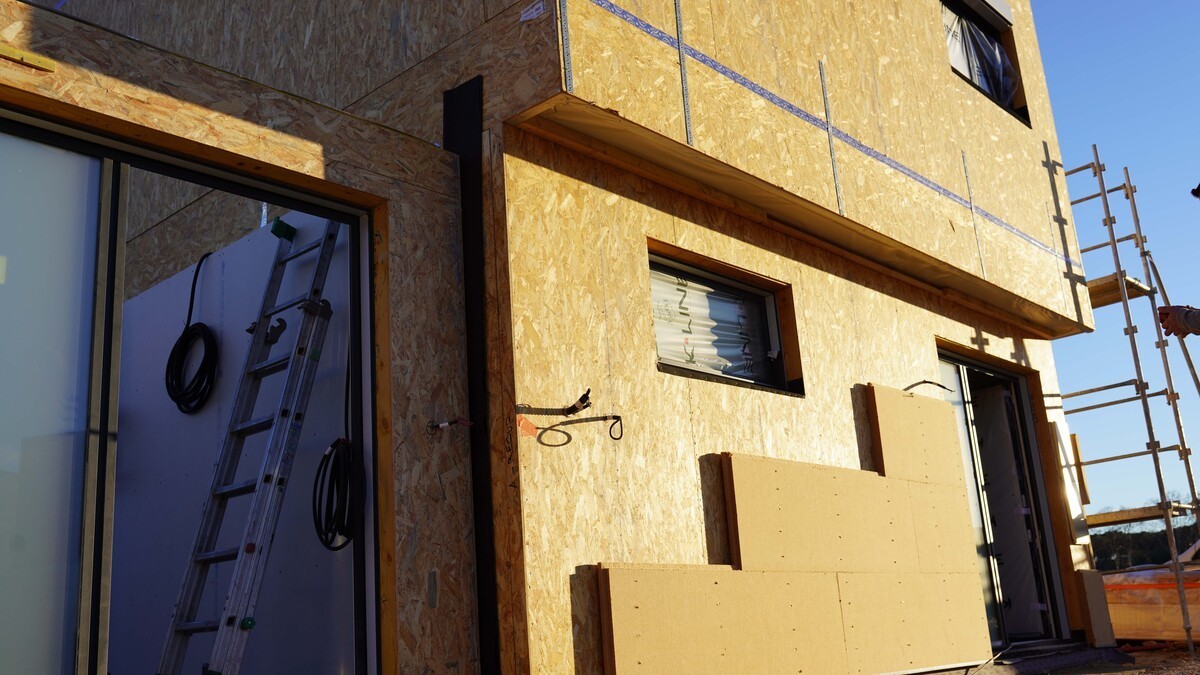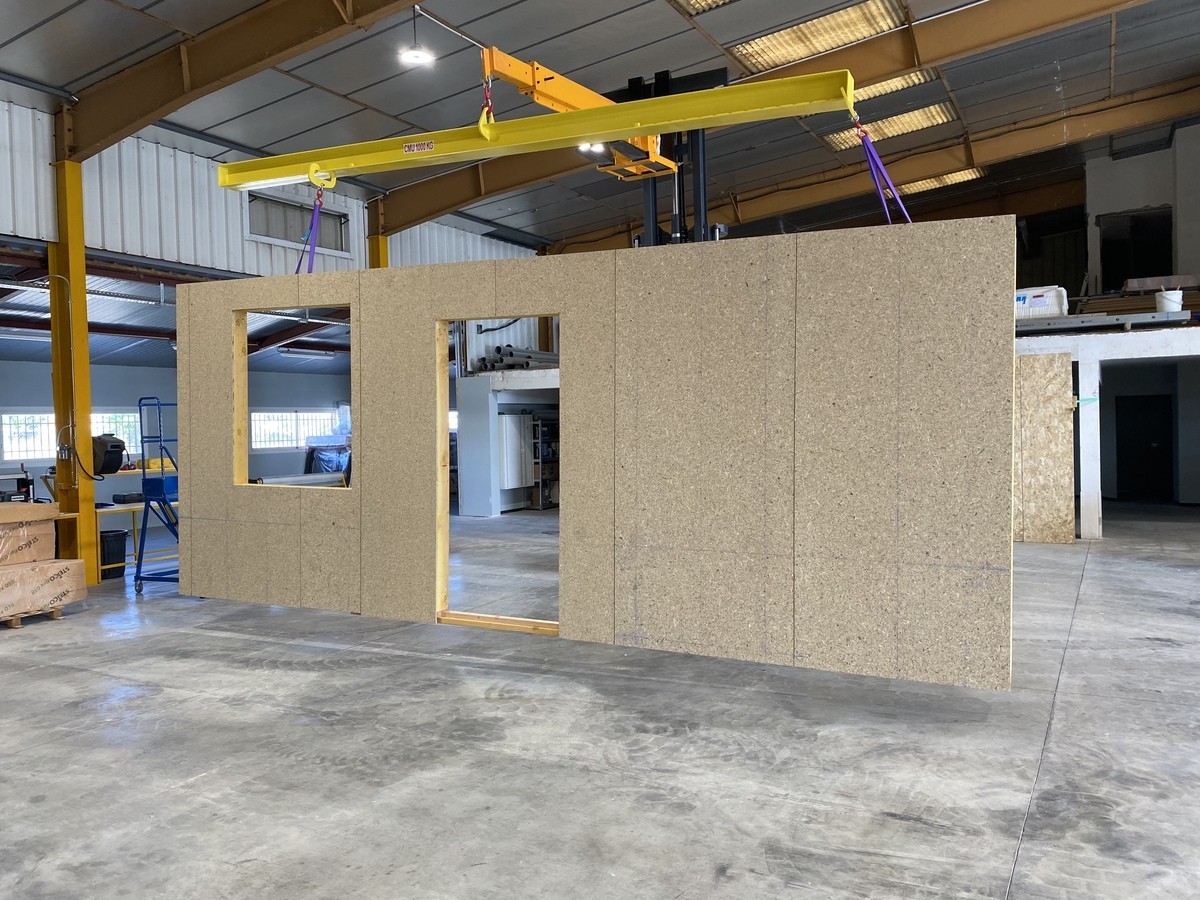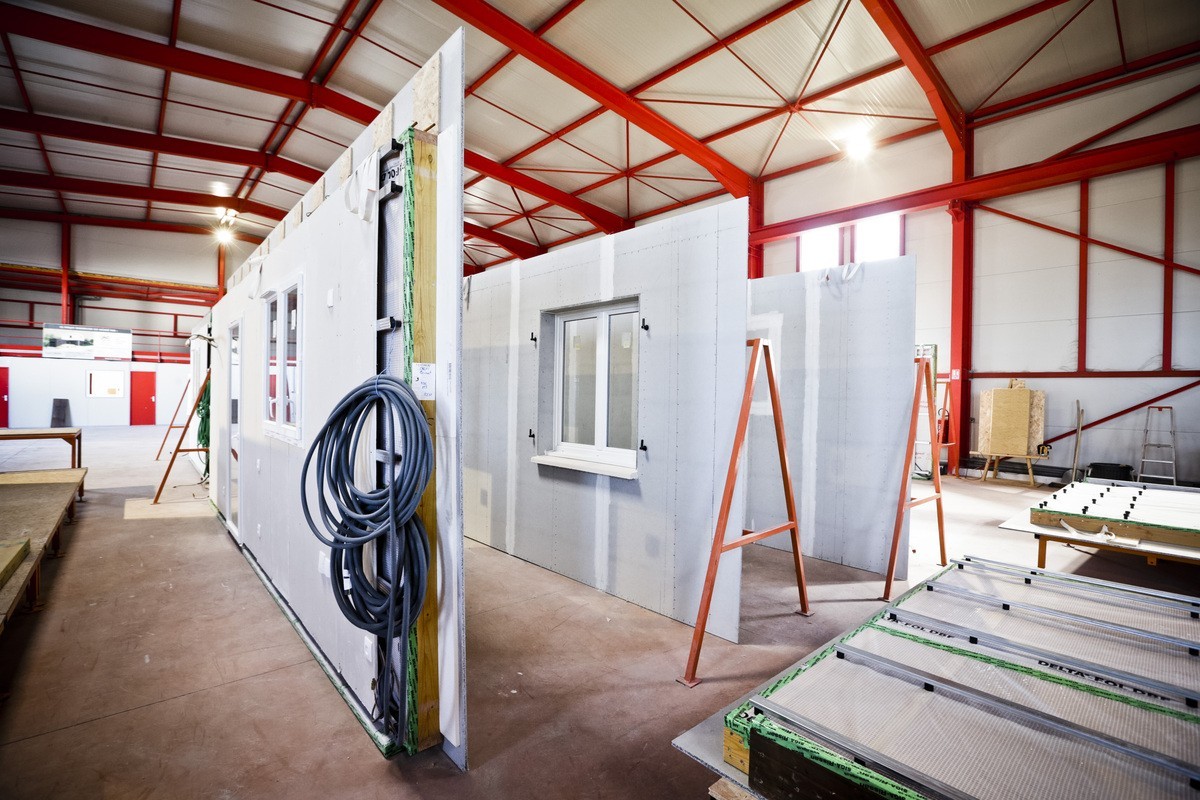Montpellier metropolis: a first wooden eco-district built off-site

Better quality of construction, less waste of materials and a much lighter ecological balance than traditional construction, off-site construction has serious arguments for inventing the construction systems of tomorrow. Illustration in the Montpellier region within the eco-district of the ZAC du Castelet (34), where the Eocène company launched the construction site of 17 wooden villas on January 19, all resulting from off-site construction. A model to follow!
Weather hazards, delays, breakage... there are many uncertainties on a construction site. From this observation was born the PANOMUR® off-site construction system developed by Morgan Chabalier, co-founder of Eocène: "we have reached 80% feasibility in the factory, the panels of future homes leave with their structure, bracing, interior insulation and exterior, carpentry, electricity and plumbing”.
The result ? A 90m² house delivered out of water and out of air in 5 days, ready to receive its finishes. A saving of time specific to prefabrication: while the structural work is harnessed to the earthworks, the panels are built in the factory. These arguments convinced the Montpellier public developer SA3M to opt for a completely off-site solution to build the 17 individual wooden frame houses in the Castelet eco-district in Clapiers (34). A first in the region from a public developer. Started in January, all the lots will be delivered in September 2023.
Swarm in the territories
"We don't make big factories because the idea is to set up everywhere, today we work in the south of France, mainly in the Hérault, but we can work on the whole territory" presents Morgan Chabalier. For the Clapiers project, the wood used comes from the Cévennes and the panels are made in the 2,000 m² factory of the company Evolusud based in Miramas (13), concessionaire of the PANOMUR® solution. " The idea is to reduce the circuit to the shortest, in the Landes we use wood from local forests, 98% of our materials are of French origin " he specifies. The photovoltaic panels installed on the villas are also made in France.
On arrival, the price of wooden villas does not differ from that of apartments in neighboring residences. " It is even slightly lower than that of the market in the town, which is around €4,000/m² " specifies Tristan Séchaud, co-founder of Eocène, "we have several customers who have preferred, for the same budget, a apartment T4 or T5, buy a house with us, with the added bonus of a piece of garden”.
Streamline for better quality
Building off-site also better meets regulatory and user requirements. "Everything is checked in the factory before being brought on site, of course that does not prevent errors but it is still easier to avoid them when you build in advance, without stress and without having to undergo the vagaries of the weather ," explains Morgan Chabalier.
A new way of working which presupposes a rationalized evolution of the ways of doing things for the various trades involved on the site. The opportunity to overcome certain ingrained habits: “ with our construction system, the drywall workers also produce electricity. We thought it would still be much more relevant to ask them to run the cables after they had drilled the placo, theThe result is a real time saving on the production line” adds Morgan Chabalier.

Decarbonized production
The RE2020 was not yet applicable when the building permit was filed, but thanks to an efficient structure and photovoltaic panels intended for self-consumption, the constructions still reach its levels. Among the sources of savings, the reduction in the number of trips to the site is one of the most visible benefits of off-site: " we produce and transport 2D in the factory to do 3D on site, this saves us having to move void, ” adds Morgan Chabalier.
On the waste side, the difference is significant: "we have irreproachable waste management, in particular by recycling material scraps, a 90 m² house is a big 50L bag of waste, that's where we do the most savings . For the rest, a good place is given to low-carbon materials: " we only use biosourced materials, our insulation is made of wood wool, inside and outside, the frame materials are made of French wood, from eco-managed forests. »
However, it is still difficult to quantify the true gain. “Calculate on a traditional construction site of a 90 m² house how many craftsmen go back and forth etc. is very complex, but we are currently working with a company to be able to assess all the carbon emissions that our worksites allow us to avoid,” says Tristan Séchaud.
From now on and to offer better total traceability of the materials used and the participants, software has been created to facilitate the exchange of information (plan, balance sheet, studies, descriptive notices, insurance contracts, technical sheets, etc.) between the building professionals.
Massification objective
Tomorrow, the Eocène company intends to continue to develop off-site activities in Montpellier. "We needed a good reference, the challenge is to prove by example, it took us three years to build 17 villas, the goal now is to make a hundred of them out of three or four large projects over the next three years, ” announces Tristan Séchaud.
The stars are also well aligned for a favorable deployment of off-site solutions according to Morgan Chabalier: " I've been doing off-site for 10 years, my father was one of the pioneers, and if 10 years selling an off-site wooden house was a struggle, today the off-site has entered the law and documents such as the CCTP or the DTU promote it, which means that town halls and mixed development companies and public trust this type of constructive system, it's a huge step forward! »




